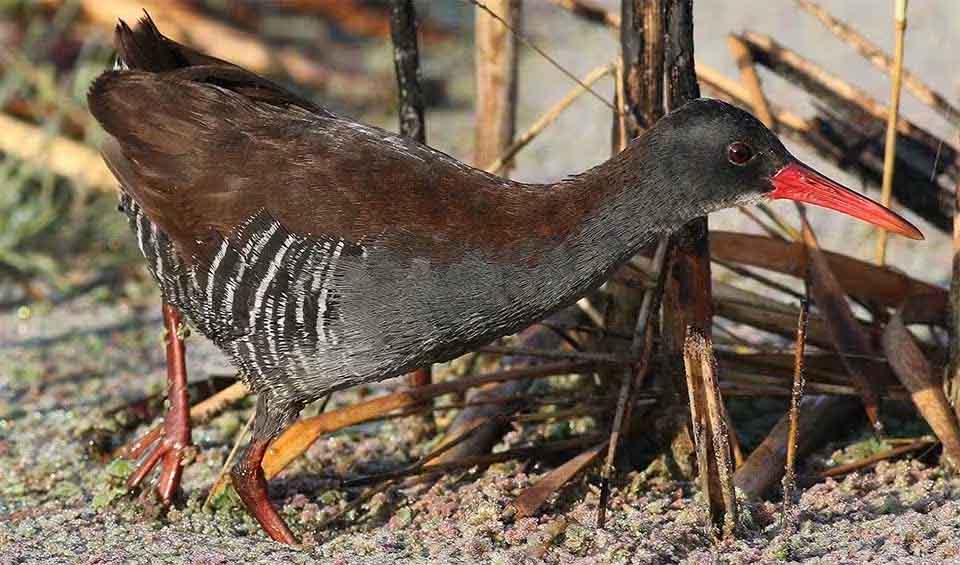A fascinating bird that inhabits the wetlands across sub-Saharan Africa. This bird is a member of the rail family, which is known for its secretive lifestyle and preference for dense marshy environments, making the African rail a seldom-seen yet intriguing species.
Physically, the African rail is a medium-sized bird characterized by its slender body and relatively short tail, which are typical features of the rails. Its plumage is primarily grayish-blue on the upper parts and flanks, with a darker coloration on the top of its head and back and a strikingly lighter underbelly. One of the most distinctive features of the African Rail is its long, red bill and similarly colored legs, which not only aid in foraging within the mud and shallow water but also make it visually distinctive among the dense reeds and grasses of its habitat.
African rails are known for their skulking behavior; they rarely fly and prefer to run or walk through their wetland habitats, navigating through the reeds and underbrush with agility. This behavior is a survival tactic as much as it is a result of their physical build. Their long toes help distribute their weight effectively, allowing them to walk on soft surfaces near the water’s edge without sinking.
The African rail ‘s diet is predominantly animal prey, making it an important part of the wetland ecosystem. It feeds on a variety of aquatic insects, small fish, amphibians, and sometimes seeds and plant material. This omnivorous diet is supplemented by feeding at dawn or dusk, using its sharp bill to probe the mud and vegetation to locate food. This twilight activity, combined with their secretive nature, makes them challenging to spot.
Distribution
 Angola
Angola Botswana
Botswana Burundi
Burundi Cameroon
Cameroon Congo-Brazzaville
Congo-Brazzaville DR Congo (Kinshasa)
DR Congo (Kinshasa) Eswatini
Eswatini Ethiopia
Ethiopia Gabon
Gabon Kenya
Kenya Lesotho
Lesotho Malawi
Malawi Mozambique
Mozambique Namibia
Namibia Rwanda
Rwanda Sierra Leone
Sierra Leone South Africa
South Africa South Sudan
South Sudan Sudan
Sudan São Tomé & Príncipe
São Tomé & Príncipe Tanzania
Tanzania Uganda
Uganda Zambia
Zambia Zimbabwe
ZimbabweAnything we've missed?
Help us improve this page by suggesting edits. Glory never dies!
Suggest an editGet to know me
Terrestrial / Aquatic
Altricial / Precocial
Polygamous / Monogamous
Dimorphic (size) / Monomorphic
Active: Diurnal / Nocturnal
Social behavior: Solitary / Pack / Herd
Diet: Carnivore / Herbivore / Omnivore / Piscivorous / Insectivore
Migratory: Yes / No
Domesticated: Yes / No
Dangerous: Yes / No




